In many classrooms, students spend more time following steps than thinking about why those steps work. They memorize, mimic, and move on.
Dr. Peter Liljedahl’s Building Thinking Classrooms in Mathematics changes that. Grounded in more than 15 years of classroom research, the framework began in math education, where students were often solving problems by routine rather than reasoning. However, its principles now extend far beyond it.
At its core, building thinking classrooms is less about methods and more about mindset. It means designing lessons where curiosity replaces compliance, students explore before being told, and mistakes are treated as part of the learning process.
Let’s unpack what makes this approach so transformative and how teachers can adapt it to fit their own classrooms.
What Is a Thinking Classroom?

A thinking classroom is a space where students are encouraged to reason, question, and explore – where learning feels more like solving a puzzle than just filling out a worksheet quickly. In a thinking classroom, students take ownership of learning. They construct understanding together and build confidence in their ability to figure things out.
Here is a quick breakdown of a thinking classroom vs a non-thinking classroom:
| Thinking Classroom | Non-Thinking Classroom |
|---|---|
| The students talk most of the time | Teacher talks most of the time |
| Tasks invite exploration and multiple solutions | Tasks have a single, correct procedure |
| Students explain and justify their reasoning | Students show steps without reflection |
| Collaboration happens naturally | Work is done individually or in silence |
| Mistakes are treated as learning opportunities | Mistakes are avoided or penalized |
Check out our helpful guide on How to Create a Student-Centered Learning Environment That Starts With You (6 Tailor-Fit Strategies).
How to Build a Thinking Classroom
The Framework
Liljedahl’s framework outlines 14 research-based practices that shape how teachers can get students thinking. These include how groups are formed, how tasks are structured, and how teachers respond during learning. In short, thinking classrooms are built on:
- Rich tasks that require reasoning, not recall
- Random or rotating groups that encourage equity and communication
- Vertical, non-permanent surfaces (like whiteboards or chart paper) that make thinking visible
- Teachers as facilitators to guide rather than tell
- Assessment that focuses on progress and strategy, not just correctness
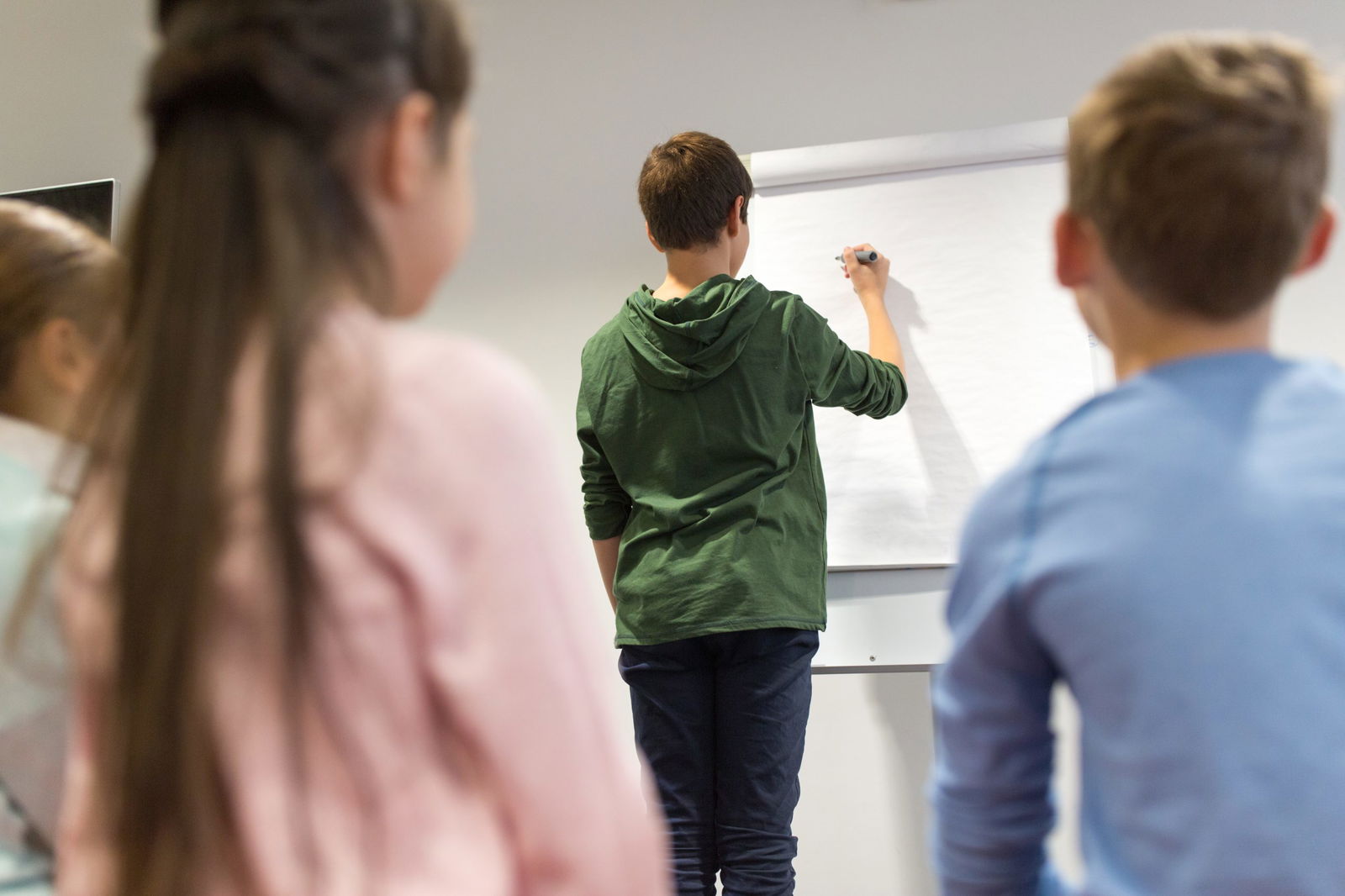
Below is a full overview of Liljedahl’s 14 Practices in Building Thinking Classrooms:
- Types of Tasks: Choose rich, non-routine problems that spark reasoning and discussion.
- Group Formation: Use random groups to promote collaboration and reduce status barriers.
- Student Workspace: Have students work on various surfaces (e.g., whiteboards, windows, chart paper) to make ideas public and revisable.
- Answer Getting: “Defront” the classroom to shift attention from teacher approval to collective reasoning.
- Notes: Delay note-taking until after exploration and discussion, so understanding, instead of just copying, drives what gets recorded.
- Autonomy: Answer fewer procedural questions to help learners take ownership of their next steps.
- Hints and Extensions: Offer prompts that nudge, not tell.
- When Students Start and Stop: Give autonomy over when to begin or end tasks to encourage self-regulation.
- Homework: Reimagine it as a “check your understanding” exercise rather than repetitive practice.
- Assessment: Focus on formative feedback that values reasoning, communication, and growth.
- Student Autonomy Over Time: Gradually release control as students develop confidence and independence.
- Classroom Flow: Build smooth transitions and consistent routines that sustain engagement.
- Consolidation: End lessons by reflecting on strategies and highlighting transferable thinking.
- Teacher Feedback and Evaluation: Provide process-based feedback that deepens understanding and builds motivation.
A Best Practice: Mindset vs Method
Today, building thinking classrooms is more about mindset than method. Teachers don’t need to copy every detail from the book; it is better to cultivate conditions that make thinking visible.
That mindset includes:
- Curiosity first, correction later. Let students grapple with ideas before explaining the right answer.
- Facilitation over instruction. Guide thinking through questions, not directions.
- Flexibility. Adapt groupings, pacing, and activities to your classroom realities.
To help foster a culture of thinking in the classroom, here are 4 Effective Ways Teachers Can Help Students Think Critically.
Common Challenges (& How to Adapt)
Even though the framework is powerful, teachers know that once you put it into practice, it can be complex and messy. Here are the most common challenges and suggestions to overcome them:
1. Class size and management
Large classes can make vertical surfaces and constant movement hard to manage. Clear routines help students stay focused while moving and talking.
Try this: Start small with one or two whiteboards per class. Establish clear group norms and rotation routines.
2. Random groupings aren’t always balanced
Randomizing groups prevents cliques but can sometimes create personality conflicts or uneven participation.
Try this: Use a “semi-random” approach to mix confident and quieter students to keep collaboration fair. Try creating groups right inside of PowerPoint so that students can earn stars with their team to add some gamification to class, too!
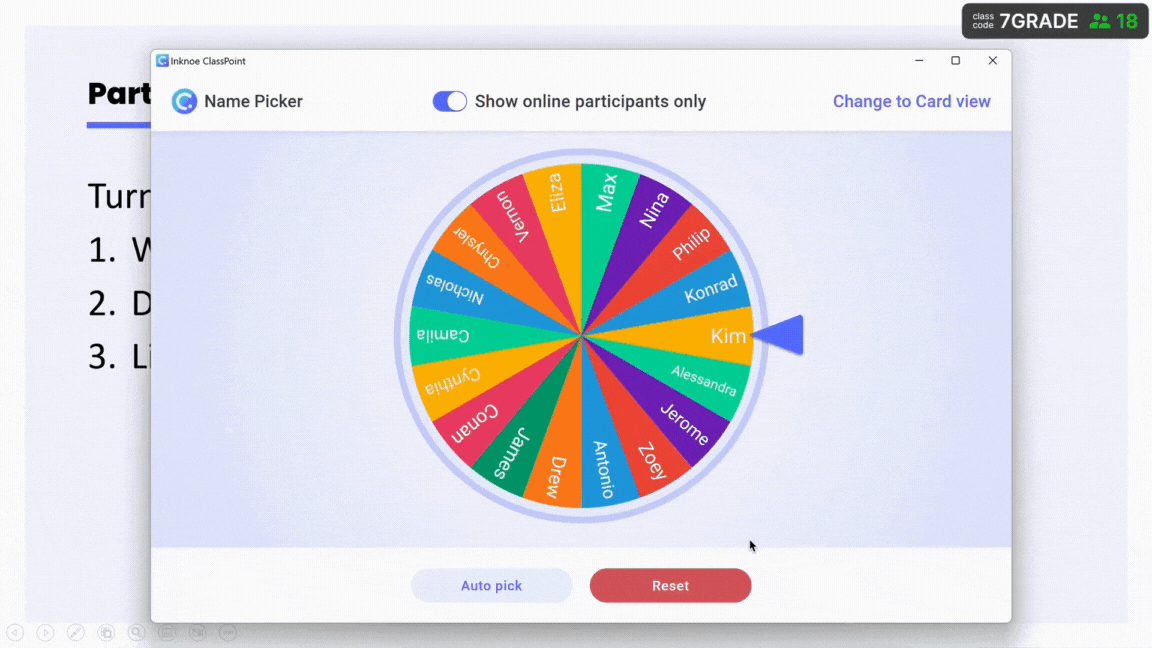
3. Supporting diverse learners
For classes with multiple IEPs or neurodiverse learners, group activities may need modification.
Try this: Offer alternative participation modes like sentence frames, visual thinking tools, or digital responses to include every learner. You can even easily create and share digital resources with Edcafe AI.
4. Pacing pressure
Thinking tasks often take longer than traditional drills.
Try this: Choose one or two lessons per week as “thinking sessions” while keeping the rest of your schedule structured.
Building thinking classrooms works best when it’s flexible. Start small, adapt to your students, and celebrate progress over perfection.
Examples of Building Thinking Classrooms
Thinking Tasks
At the heart of a thinking classroom are tasks that invite exploration rather than repetition. These are open-ended problems that require reasoning, pattern-finding, or justification.
For example, instead of asking “Find the area of this triangle,” you might ask “What patterns or relationships do you notice among triangles with the same area?” Such questions push students to think beyond formulas and consider relationships and possibilities.
Visible Thinking
Students work while standing at whiteboards or chart paper, allowing their thinking to become visible. This setup energizes collaboration and makes it easy for peers to see, compare, and build on one another’s ideas. It also signals that mistakes are temporary and part of the process. They can easily just wipe and try again.
Teacher as Facilitator
In a thinking classroom, the teacher’s role shifts from deliverer of information to designer of experiences. Instead of saying “Let me show you,” teachers ask “What do you notice?” or “Can you prove it another way?” This approach encourages inquiry, resilience, and metacognitive awareness.
Building Thinking Classrooms Across Subjects
Although Liljedahl’s research focused on mathematics, the mindset works in every subject.
🧮 Math: Use open-ended problems, number talks, and reasoning chains.
📖 Reading: Let students annotate texts collaboratively and compare interpretations.
🧬 Science: Encourage predictions, argumentation, and experimental reasoning.
👥 Social Studies: Invite multiple perspectives through debates and document analysis.
10 Practical Strategies for Building Thinking Classrooms
- Begin each lesson with a thinking task that can’t be solved by rote memorization.
- Randomize or rotate groups to prevent social hierarchies.
- Use vertical whiteboards to keep students engaged and thinking visibly.
- Keep direct instruction short, letting students explore before explaining.
- Focus on reasoning, not rightness. Ask “How did you know?” more than “What’s the answer?”
- Encourage multiple methods and celebrate creative approaches.
- Normalize mistakes as steps in the thinking process.
- Use formative assessment for insight rather than scores.
- Reflect together after every problem. What worked, what surprised you?
- Scale gradually. Add one element each term and refine what fits your students best.
How Technology Supports Thinking Classrooms
Technology doesn’t replace thinking, it can actually help amplify it when used intentionally. Try these tools in your new thinking classroom:
ClassPoint
ClassPoint is an interactive teaching add-in for PowerPoint that helps teachers turn ordinary slides into active learning moments by receiving live student responses during your presentation.
Use tools like Short Answer or Slide Drawing to visualize student reasoning live, gather instant responses, and make thinking visible right from your presentation.
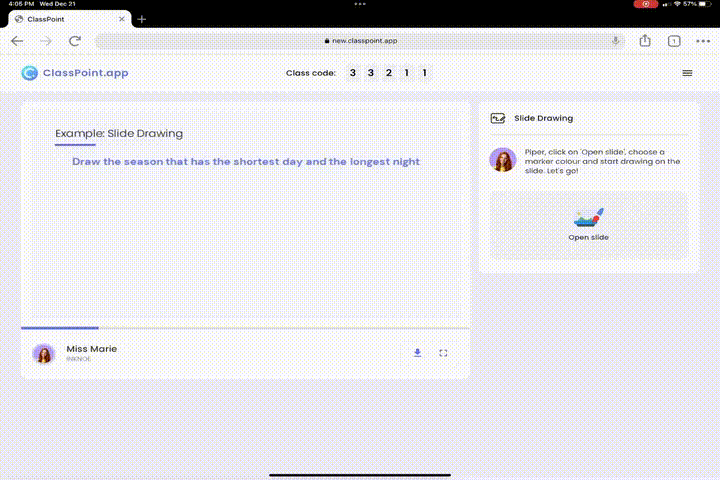
Students can submit responses under anonymous names, encouraging everyone to share ideas without fear of being wrong. As results appear live, teachers can adjust their pacing, clarify misconceptions, or deepen discussion based on what students are thinking in the moment.
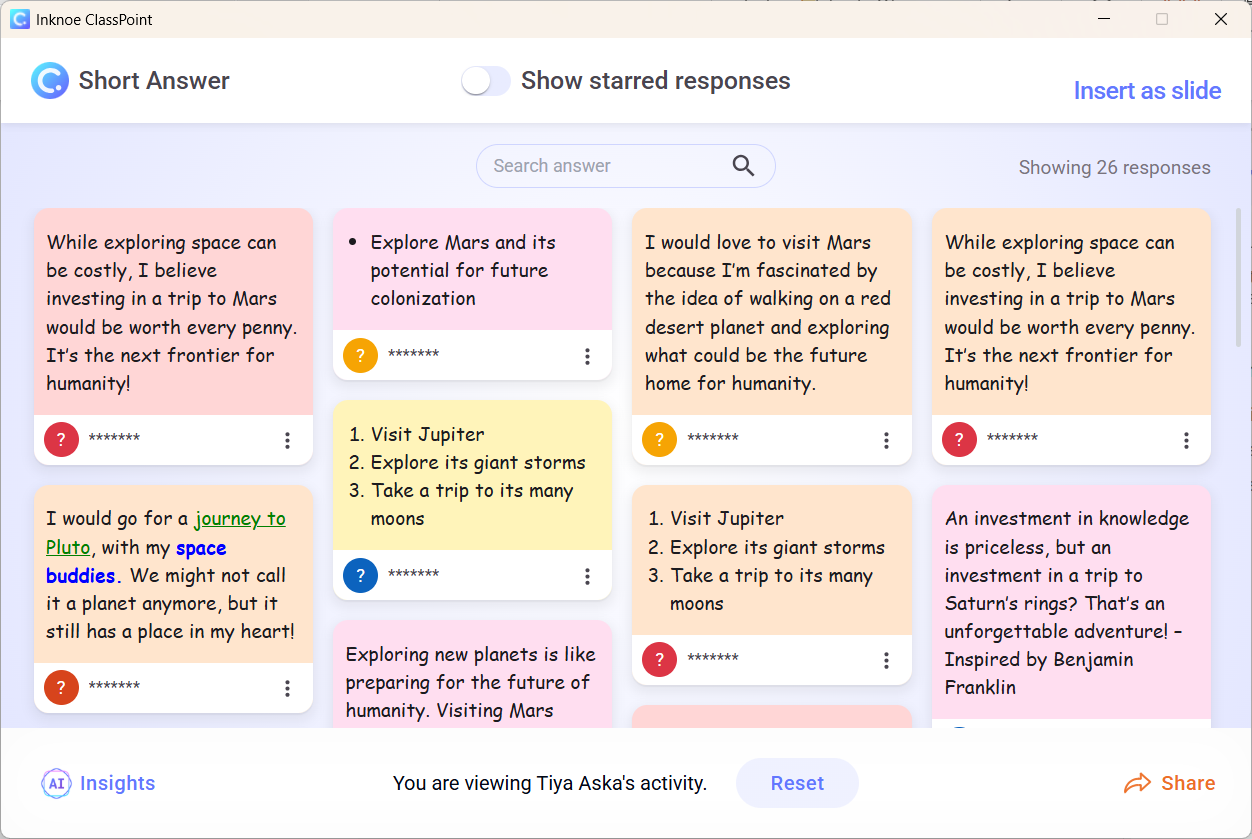
Edcafe AI
Edcafe AI is a website designed for educators. It allows teachers to create lesson materials, quizzes, and custom AI chatbots that ask probing, open-ended questions.
After a lesson, teachers can share the chatbot link so students continue exploring the topic on their own by asking follow-up questions, testing ideas, or reviewing concepts in a guided yet self-paced way. It’s like giving every student a personal thinking partner beyond the classroom.
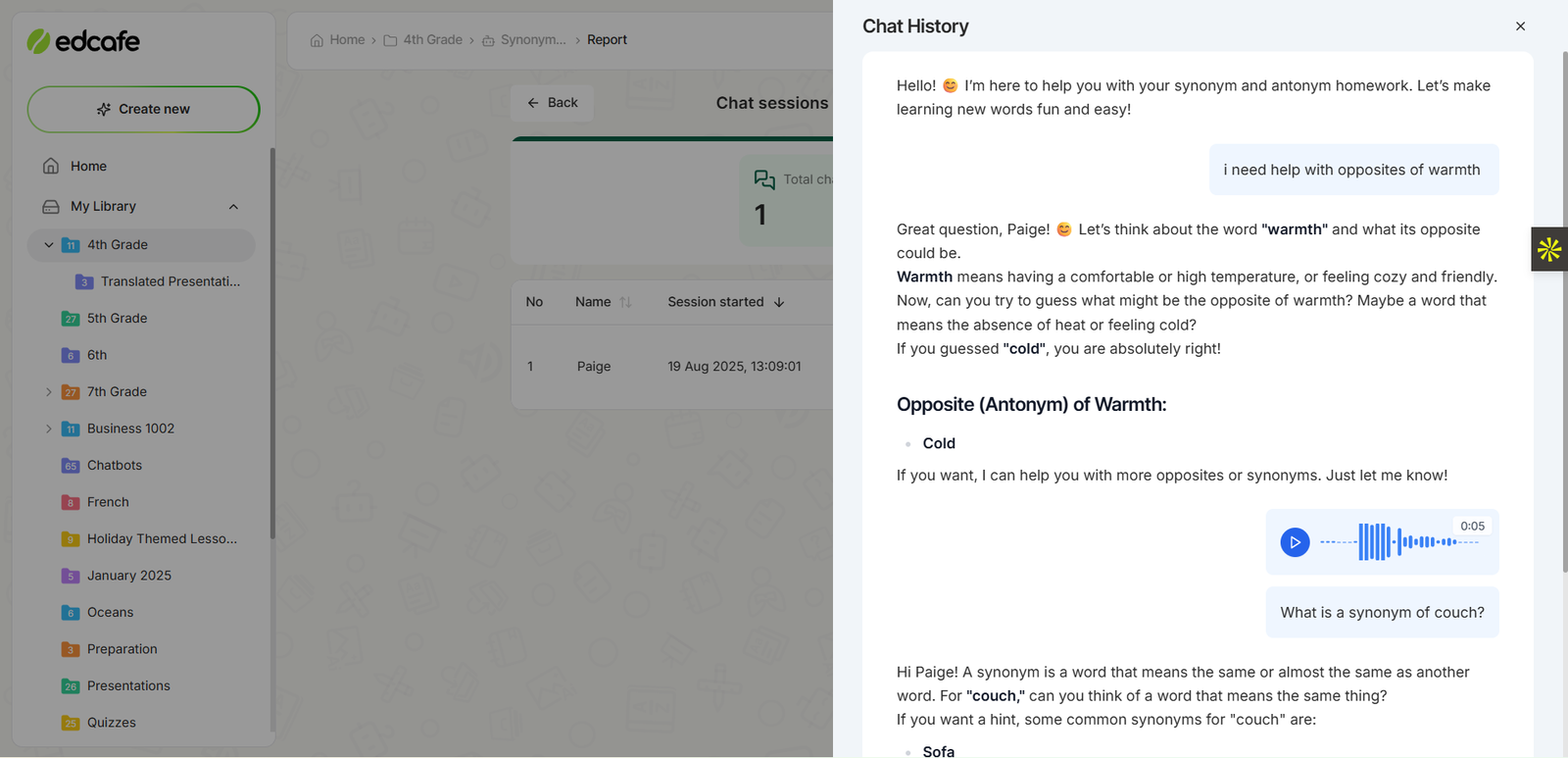
Together, ClassPoint and Edcafe AI bridge in-class collaboration with independent exploration, helping students see thinking as an ongoing process. They make the invisible visible and help teachers and students reflect on how they think, not just what they produce.
Final Thoughts
Building thinking classrooms isn’t about doing everything differently – it’s about seeing learning differently. It’s the shift from compliance to curiosity, from answers to understanding.
For teachers, the challenge isn’t perfection. Start with one small change, listen to your students, and build the classroom culture step by step.
When students think deeply, talk honestly, and explore freely, the classroom stops being a place where knowledge is delivered and becomes one where knowledge is built.
References
- Liljedahl, Peter. Building Thinking Classrooms in Mathematics: 14 Teaching Practices for Enhancing Learning. Corwin, 2020.
- Reddit Thread: r/mathteachers – Building Thinking Classrooms
